![]()
|
Index | Pottery | Pottery manufacturers | Copeland
& Garrett |
|
[Josiah
Spode] |
[Copeland
& Garrett] |
[W.
T. Copeland (& Sons)] |
[Spode
Ltd] |
Location and period of operation:
|
Copeland & Garrett |
Stoke |
1833 |
1847 |
|
Earthenware, porcelain and parian ware at the Spode Works, Stoke, Stoke-on-Trent, England.
Under Copeland & Garrett, the factory and production grew considerably - both in output and in physical size. It was among the largest pottery operations of its time. They produced a wide range of ware catering both to luxury and everyday mass-market needs catering to the come and export market. Their work helped solidify Stoke-on-Trent’s reputation as a centre of high quality ceramic manufacture. The transition from the Spode legacy, via Copeland & Garrett, was crucial in sustaining innovation in style, technique, and production in the 19th century.
The involvement of William Copeland prior to 1833:
|
Previously: Josiah Spode
Subsequently:
W. T. Copeland (& Sons)
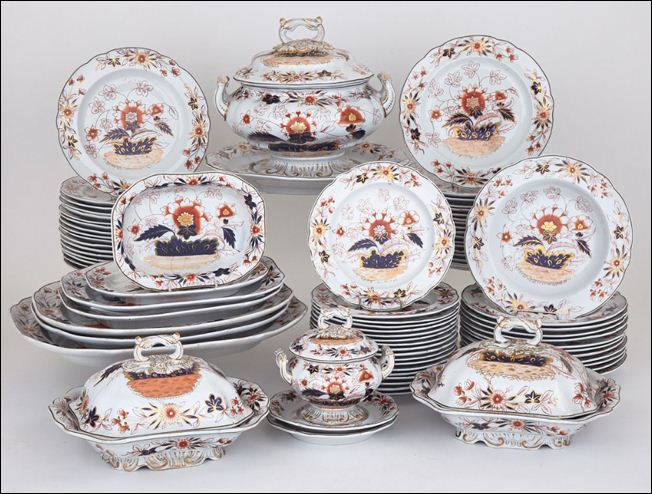
stone china dinner set
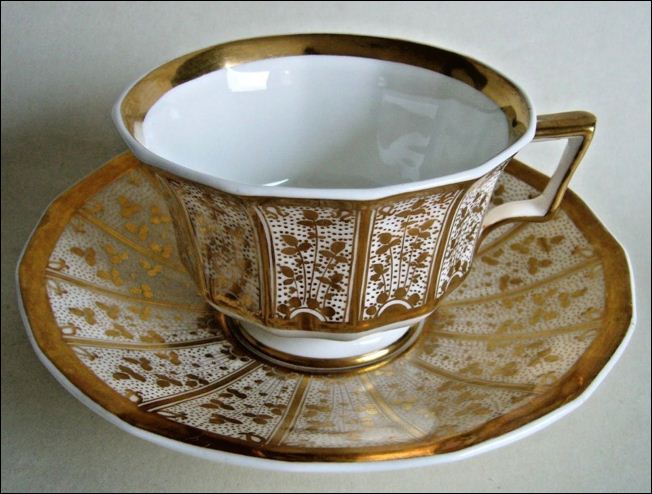
porcelain gilt cup and
saucer
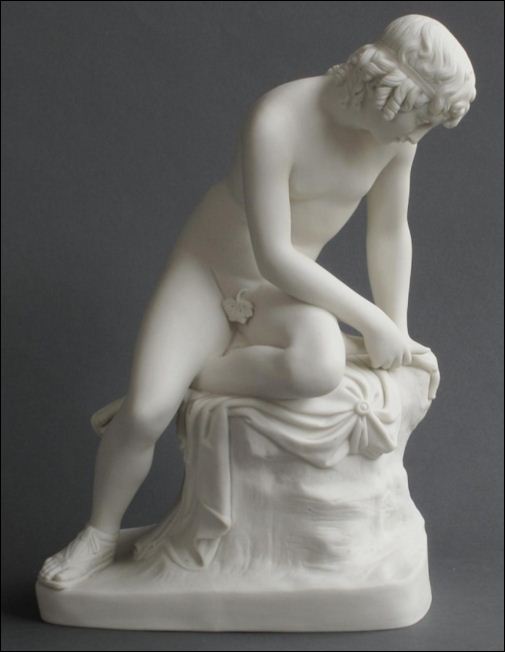 parian figure of Narcissus Height 30.5cm (12") |
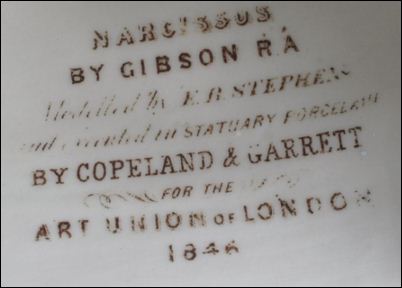 NARCISSUS BY GIBSON R.A. Modelled by E R Stephens and executed in STATUARY PORCELAIN by COPELAND AND GARRETT FOR THE ART UNION OF LONDON 1846 |
|
This was one of a small number of items selected to be produced for the Art Union of London in 1846 (50 copies were originally made in 1846 to be distributed as prizes) to great critical and public acclaim. This figure continued to be produced through the second half of the Nineteenth Century by the subsequent firm of Copeland with a Copeland mark. |
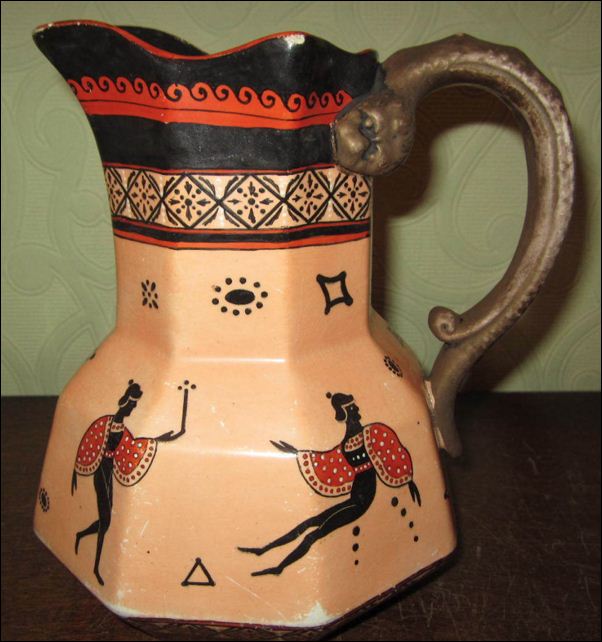
Earthenware 'Hyrda' jug
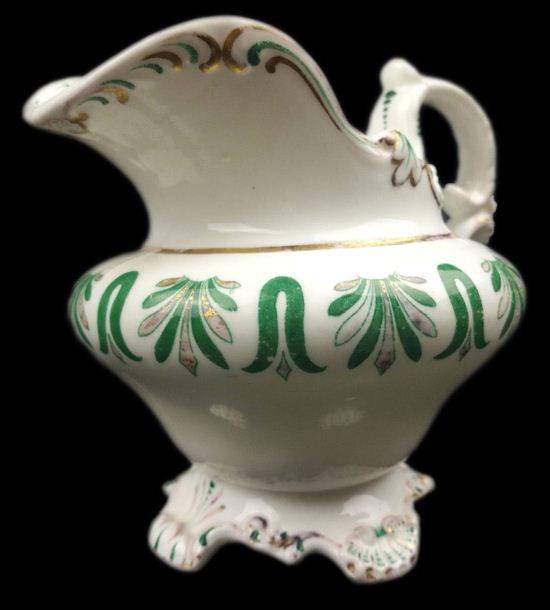
earthenware relief moulded
jug
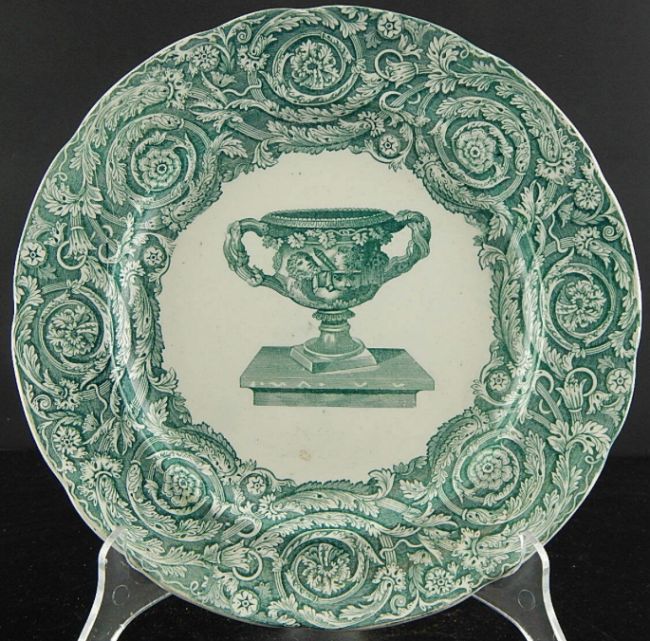
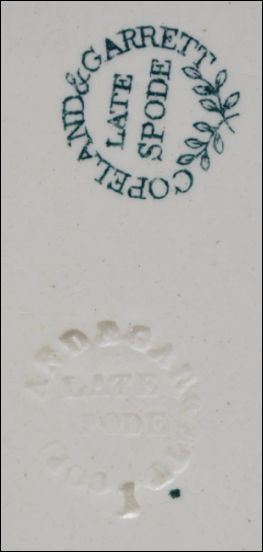
plate in the Warwick Vase
pattern
Marks & initials used on ware for identification:
| The name “Spode” and "late Spode" often appears on Copeland-era ware because the Copeland family continued the Spode business, valued its reputation, and used the name as a trademark to maintain continuity, market trust, and pattern identity. |
C & G
COPELAND &
GARRETT

Copeland &
Garrett
impressed mark
c. 1833-47
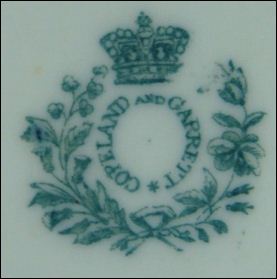 Copeland & Garrett |
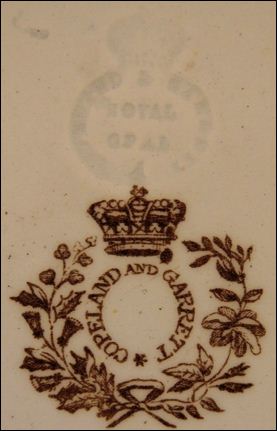 Copeland & Garrett Royal Opal impressed and printed mark ROYAL OPAL is the name of |
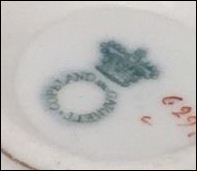 Copeland & Garrett this style of mark, without the garland
surrounding the name, was used on small items - such as cups |
c. 1833-47
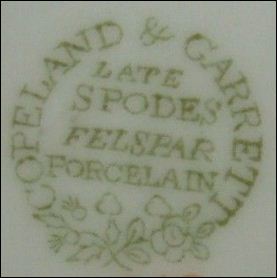 Copeland & Garrett Late Spodes Felspar Porcelain |
|
FELSPAR PORCELAIN is the name
of
the body of the ware
c. 1833-47
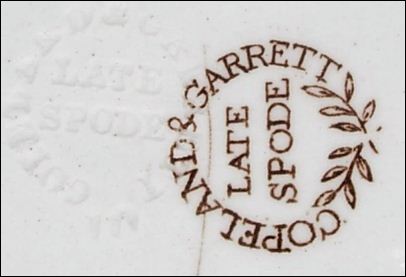 |
|
Copeland
&
Garrett
Late Spode
impressed and printed mark
c. 1833-47
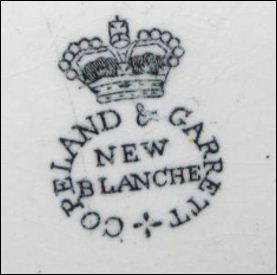 |
|
New Blanche
and New Fayence
are the names of the body of the ware
c. 1833-47
Copeland and
Garrett marks resurrected by Spode post 1997
| Around 1997 Spode Ltd introduced a reproduction of the Copeland & Garrett mark as a part of a marketing campaign, although the ware was newly designed and not reflective of the original. |
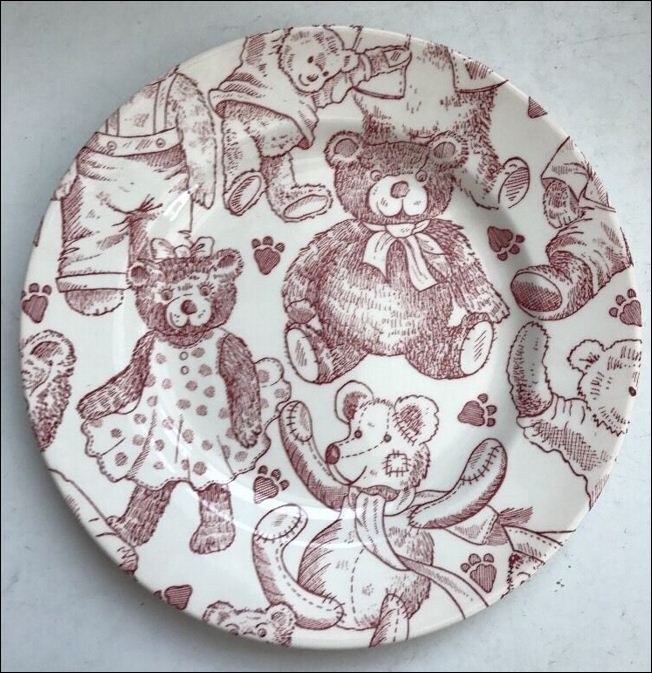
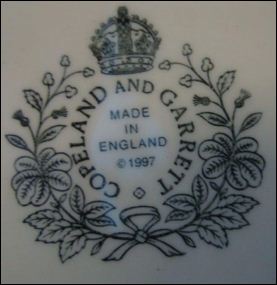 |
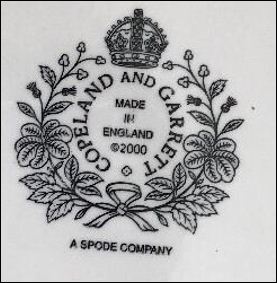 |
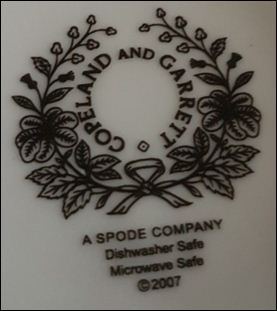 |
- click for more -
Questions, comments, contributions? email: Steve Birks
|
Page created 17 May 2018 Last updated 7 October 2025: introduction expanded and dates introduced; added explanation of marks resurrected by Spode post 1997. |